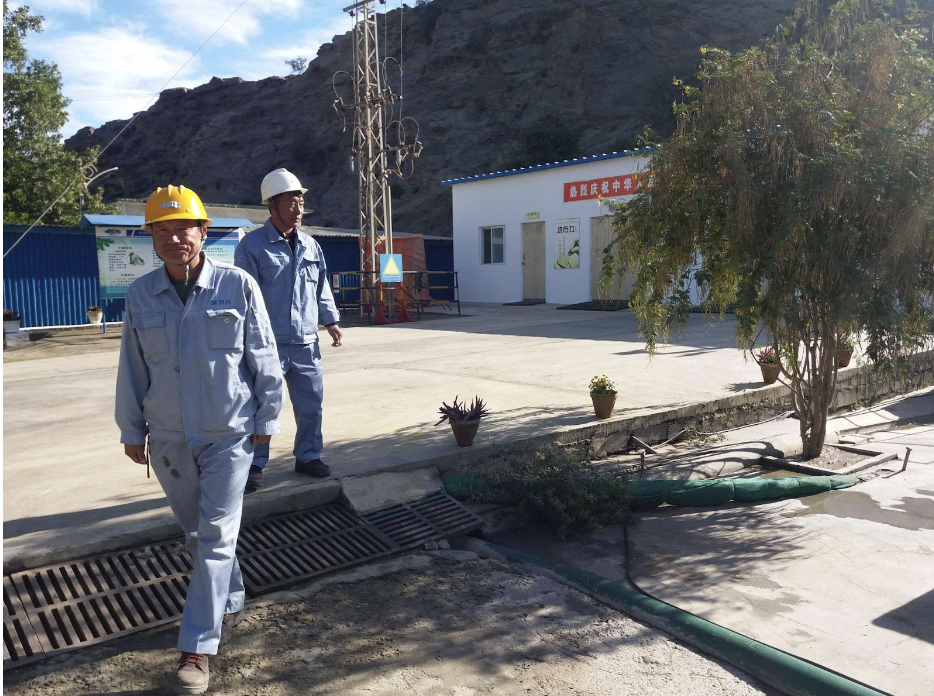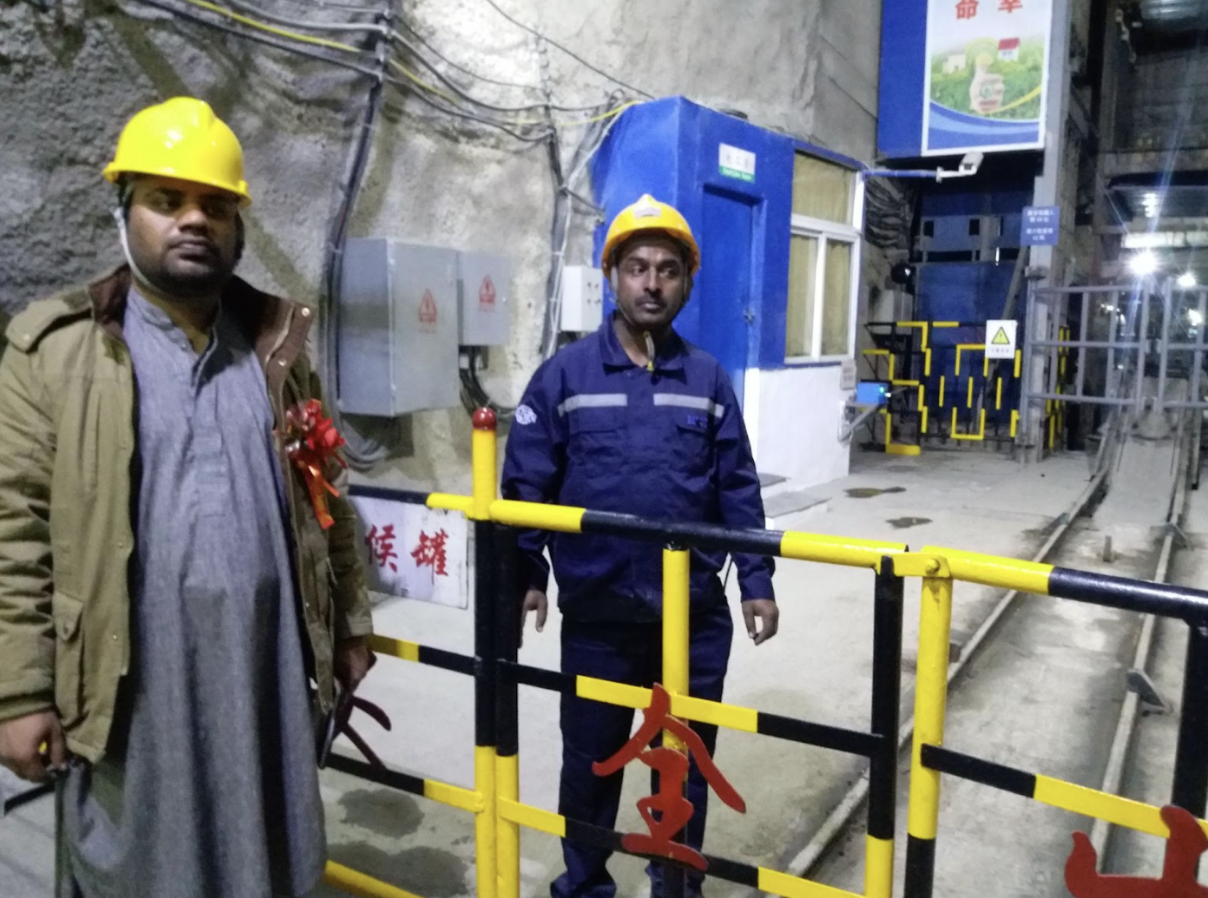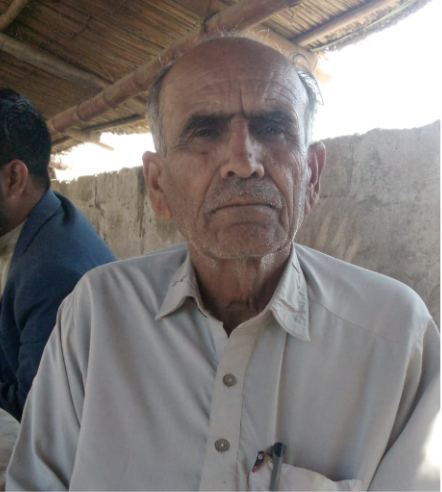Inside China’s lead and zinc mine in Balochistan, Pakistan
A Chinese state-owned company has controlled a lead and zinc mine in Duddar in Pakistan’s Balochistan Province since 2014. The mine gives steady work to some locals, paying around $100 a month, which is good for the impoverished area. Other residents just feel exploited.

The Duddar lead-zinc mining project is located in the Lasbela District of Pakistan’s southwestern Balochistan Province. The Chinese operate the country’s first underground metal mining project at Duddar in the Kanraj Valley of the Lasbela District, about 135 kilometers north of Karachi, the country’s financial capital.
While the China Metallurgical Construction Group Corp (MCC) is the investor and developer of the project, the construction and production is carried out by the China Huaye Group (华冶集团). MHD — the MCC Huaye Duddar Mining Company — is the operator of the lead-zinc mining project in Balochistan. The management of the project comprises mostly Chinese nationals assisted by Pakistanis.
Investigation began into Duddar deposits in 1980
The ore reserves at the Duddar mine have been estimated at 50 million tonnes with ore grading of 3.2% for lead and 8.6% for zinc. The Duddar mining project originally started in 2005, but difficult mining conditions forced it to close. An investment of $236 million, including $108 million by MCC and $101 million by MHD, was made to bring the project to the production stage.
Hundreds of trucks loaded with the project’s minerals leave Duddar each month for Karachi via the road leading to the town of Winder, where they take the road leading to the port city of Karachi. There the minerals are taken by ship to China for processing. The Duddar–Winder road is the only paved road, constructed by the government of Pakistan. This is used by the Chinese company for transportation of zinc and lead to the port of Karachi. It is also used by locals to move to other districts in Balochistan.

The strict security at the Duddar mining site by Pakistan’s armed forces has minimized the threat from militant Baloch separatists in Kanraj. However, the separatist groups in adjacent areas and other districts close to the project have been a constant threat to Chinese staff and visitors, particularly when they travel to Karachi.
In 2014, MHD took over the project, which is located in Kanraj, the least developed and most backward area of Lasbela District. In 2019, the Duddar project reached its peak annual production capacity of 500,000 tonnes.
A senior official of the MCC Resources Development Limited (MRDL), a wholly owned subsidiary of MCC, on the condition of anonymity, told The China Project that the credit goes to the China Huaye Group, which has executed this complicated mining project. Though the Duddar lead and zinc project had been launched in 2005, it never went anywhere until the Chinese arrived.
“The earlier design of the project was a failure and it was even shut down. The project was successfully launched after the entry of the China Huaye Group. With advanced technology, the company built a shaft with a depth of one kilometer and a diameter of 7.5 meters for this underground mining project. For the extraction of lead and zinc ore, a network of small tracks was built,” the official said.
No hospitals or schools
The advanced technology in the mine does not seem to be matched by any advancement in living conditions for people around the mine.

“The villages around the Duddar project are still deprived of basic civic facilities. The availability of basic health and education facilities is still a dream for locals,” Comrade Saleem Baloch, a political activist in Lasbela, told The China Project. “There is no hospital with proper treatment facilities and medical equipment and no quality education institutions in the entire district. There is only one government primary school for girls and one high school for the boys in Kanraj. The school buildings are in poor condition,” said Baloch.
“Duddar lies in the district where the tribal system is still very strong. The people have to follow tribal norms and obey the tribal chiefs, and no one dares to defy the authority of the chief in a tribal society. That’s why there have been symbolic protests by the locals for their economic and political rights, but these protests could not pick up momentum owing to the pressure from certain tribal chiefs, who are the actual beneficiaries of the Duddar mining project,” Baloch added.
Some political leaders also believe that Balochistan and its people have so far not benefited from the Chinese-funded projects.
“The locals are not the primary beneficiary of any of the projects in Balochistan, including the Chinese-run Duddar mining project,” Aslam Bhootani, the Member of the National Assembly (MNA) elected from the Lasbela District, told The China Project. “Balochistan’s resources are the main reason behind most of its problems. The exploitation of resources without benefiting the locals has intensified the sense of deprivation and alienation in the province,” Bhootani said.

“The locals are not against the development…What they want is their due share in foreign-funded projects. I have raised the issues regarding development projects, including the Duddar project, in the parliament, but no practical measures have yet been taken by the ruling authorities to address the grievances of locals,” said Bhootani.
The local activists are not satisfied with the official statement that locals are reaping benefits from the mining project.

“There is zero spending of funds on development under corporate social responsibility if we talk about the impact of the Chinese-run mining project on areas adjacent to Duddar,” Aziz Lasi, a local journalist in Lasbela, told The China Project. “Locals are given jobs on a contract basis. These are menial jobs. The majority of the local population in Lasbela is associated with agriculture and livestock. The people are still deprived of clean drinking water, quality education institutions, and adequate healthcare facilities. The people under tribal and feudal systems remain somewhat voiceless about their economic and political rights,” Lasi said.
“The wages or salaries are lower for local workers in the Duddar project compared with the workers from other areas of Pakistan,” G. Q. Jamot, a social activist in Kanraj, told The China Project. “Local unskilled workers are drawing salaries between 15,000 and 20,000 rupees [$50 to $70] per month. We have no adequate health facility at Kanraj and villages adjacent to the Duddar project. We have to move maternity patients [ready to give birth] to Karachi by traveling 130 kilometers [80 miles]. The workers who get injured in mining accidents do not get quality emergency treatment in Kanraj, and often die,” Jamot said.
On the other hand, company officials told The China Project that the company left no stone unturned to address the grievances of the locals by taking steps to appease them.
Despite complaints, the mine is creating local jobs with benefits
“The Chinese have made 100% investment in the project. Seventy percent of the employees in the Duddar project are from Balochistan and out of 70% local employees, 75% are locals from the Lasbela District,” Azeem Khan, the assistant manager of the Duddar mining project, told The China Project.
“The minimum salary the locals are drawing from the project is 30,000 rupees [$105] per month. We provide quality food to each worker three times a day. There is no difference in salary for the locals and the workers from other areas of the country. The company donated $125,000 to the National Disaster Management Authority [NDMA] for the relief and rehabilitation of areas in the Lasbela District devastated by the 2022 floods in Balochistan. We supply clean drinking water to the locals in Kanraj. We distribute food items during the Muslim holy month of fasting [Ramadan] and on the occasion of Eid [another Muslim festival]. We provide the best treatment to the workers who get injured during mining operations. The seriously injured are shifted to the best private hospitals in Karachi,” Khan said.
The senior MRDL official told The China Project that the locals have benefited from the project if one compares the current status of development in the project area with the status before the launching of this project a decade ago. “I traveled on a camel to reach the project site at Duddar more than a decade ago. Today, there are roads and communication infrastructure developed over the years because of this project,” the MRDL official told The China Project. “I would say the locals are the beneficiaries of this mining project. Balochistan gets a handsome amount from the sales revenue of the minerals or in terms of royalty. The provincial authorities need to spend the amount on development of this area,” he added.
Are the Pakistani authorities to blame?
The China Project also talked to an inside source with the mining project who revealed that local unskilled workers are drawing a monthly salary of more than 30,000 rupees [$105]. “The monthly salary of some local workers who learn to speak the Chinese language has been increased up to 50,000 rupees [$176],” said the source.
“The company takes care of workers who get injured during mining accidents. Within the project site, there is a first aid medical facility for the slightly injured workers. The seriously injured workers are shifted to Karachi for treatment in a high-profile private hospital such as Agha Khan Hospital. The company bears all expenses for their treatment.”
Asif Baloch, the editor of Daily Azadi, an Urdu-language newspaper in Balochistan, told The China Project that Pakistani authorities are mainly responsible for not addressing the locals’ grievances in Kanraj.
“Kanraj is still the most deprived area in the Lasbela District. Chinese are the investors. They are not the political stakeholders in Balochistan. They are running the project under a deal with the Pakistani authorities. They pay a 6% royalty to the Balochistan government, a presumptive tax to the federal government, and a development surcharge. It is now up to the government how much it spends on the welfare and infrastructure projects in the area where the Duddar mine is located. I think the Balochistan government is equally responsible for the status quo in Kanraj,” Baloch said.
Whatever the claims of the company officials or the local activists, the reality on the ground is still harsh for the locals residing in villages around the Duddar mining project. There is no decent housing and the people live in houses built of mud and stone. The school buildings are in poor condition. The locals lack proper healthcare facilities and quality educational institutions.





